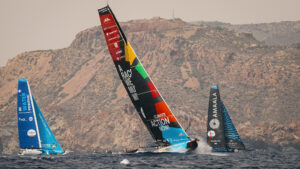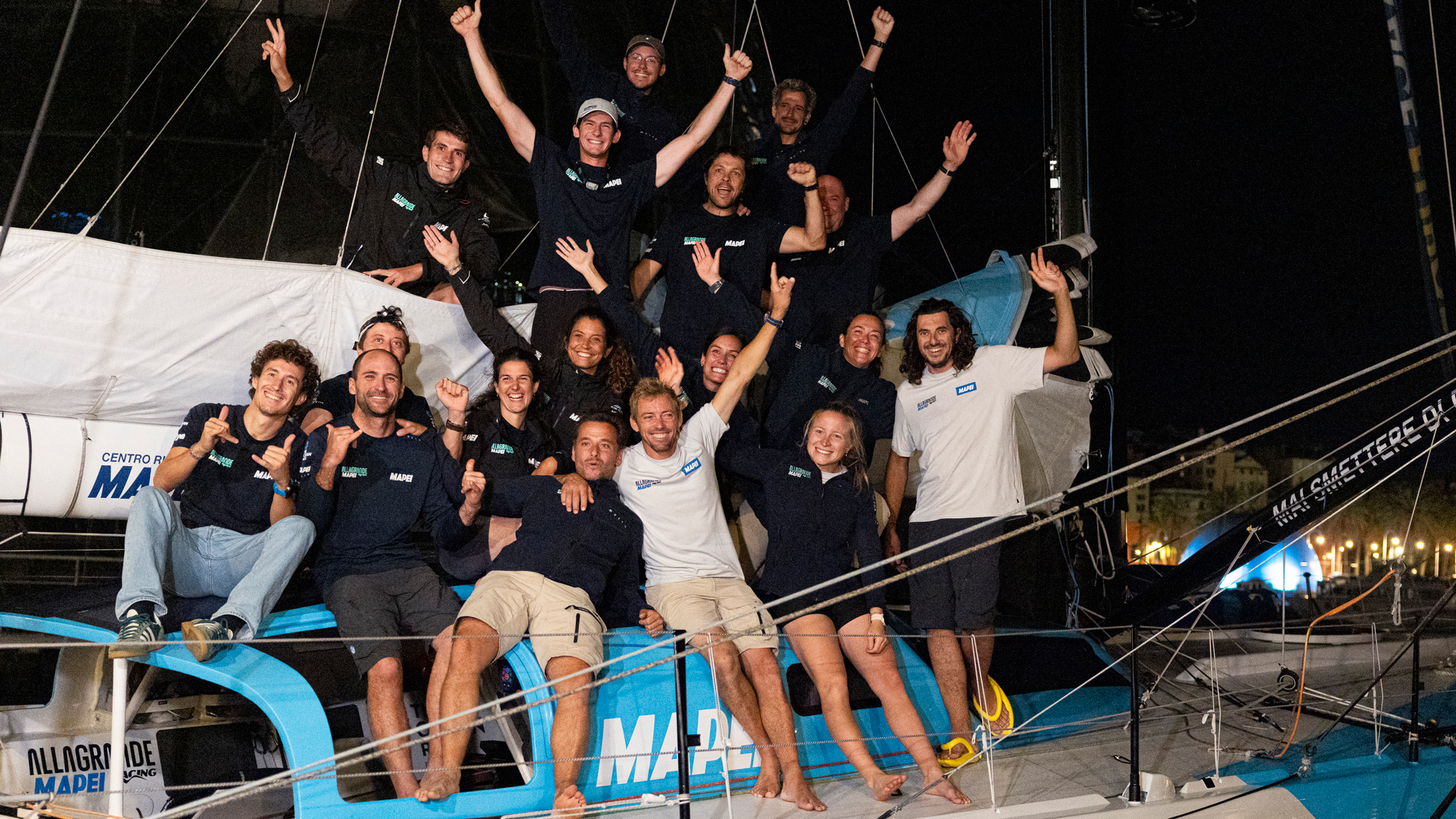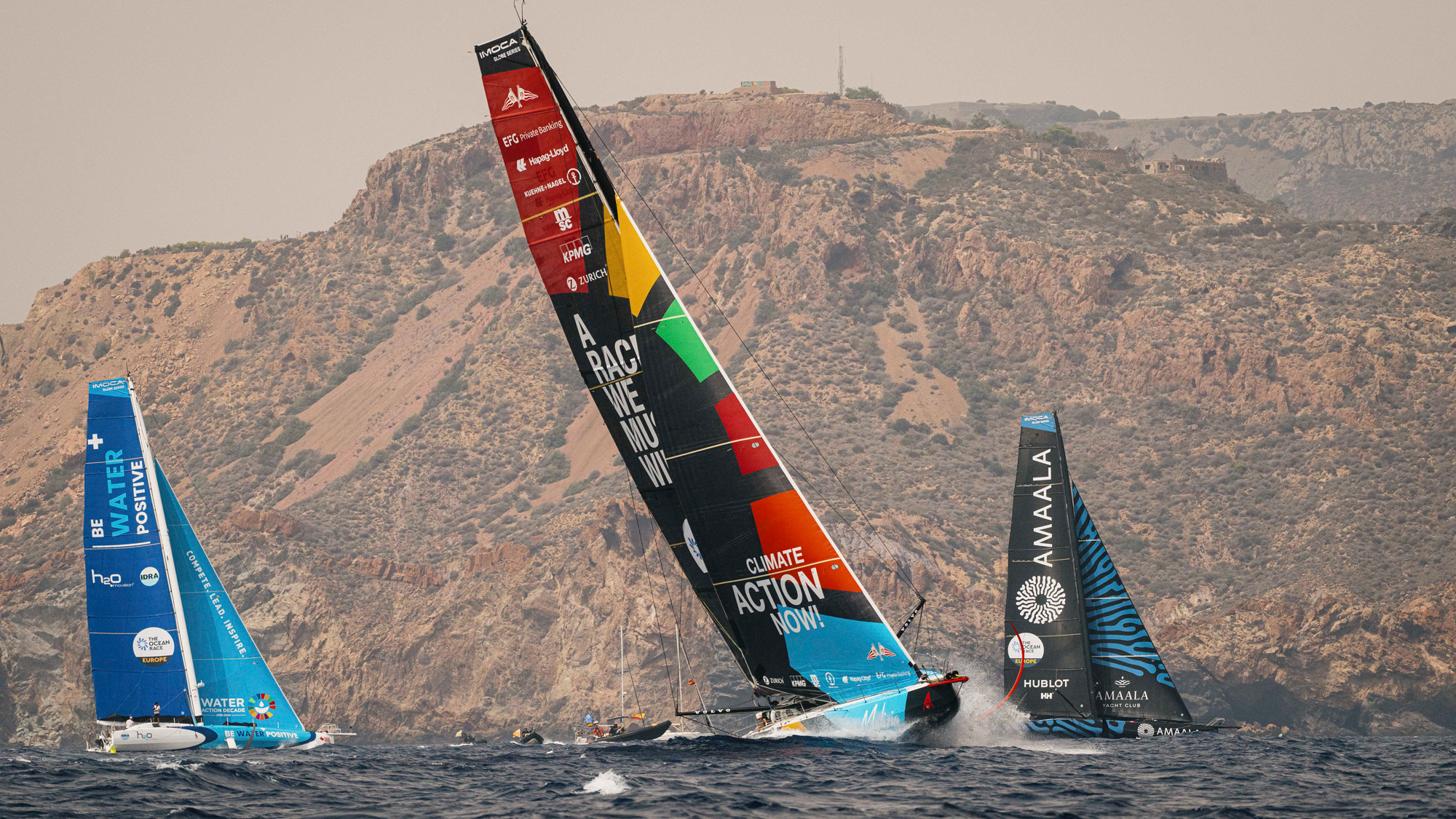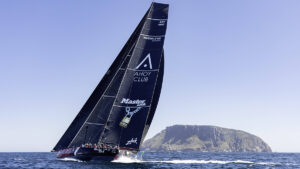It might be a different challenge to the Vendée Globe, but The Ocean Race Europe still brings high-intensity racing to the ocean-going IMOCAs class
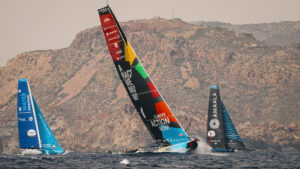
Given what the IMOCA 60 class was designed for – and the way in which blasting around the world non-stop, alone, on foils in just under 65 days grabbed everyone’s attention last winter with the Vendée Globe – we could be forgiven for thinking that a six-leg, fully crewed, stopping service around Europe is a walk in the park for the world’s top sailors and their 60ft rocket ships.
You might not be surprised to hear they don’t seem to see it like that. After all, what’s the point in talking down an event that many of them have been talking up for months in the boardrooms of potential commercial backers?
I spent a bit of time with the skippers and crews on board their boats and on the dock ahead of the start of The Ocean Race Europe in Kiel, and it’s quite clear they mean it when they say that the 4,500-mile, six-week race would be extremely tough.
Sam Goodchild, who is sailing aboard Biotherm, looked me straight in the eye and said: “It’s not going to be easier than the Vendée Globe that’s for sure.”
Biotherm skipper Paul Meilhat, who finished 5th in the last race around the world, and who sailed Biotherm fully crewed in the 2022/23 Ocean Race told me that, while he had recuperated physically from his recent lap of the planet, he hadn’t fully recovered from the project mentally and that this race around Europe would give him, ‘the kind of slap in the face that I need to get back on track!’
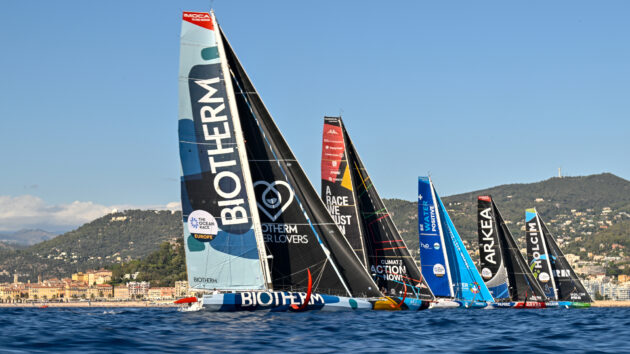
Photo: Jean-Lous Carli / The Ocean Race Europe 2025.
Both of them talked of the intensity of the race and the focus it requires – particularly the complexity of a course that weaves itself around sand banks, rocks and wind farms to exclusion zones, shipping lanes and general traffic. They talked of the complex weather, the tides and, of course, their competitors. The crews may have barely discussed a watch system, given that there’s so little opportunity to operate one if you’re going to stay ahead of the pack.
The longer legs in this race from Kiel, Germany, to Boka Bay in Montenegro, each take around four days, around the time that the rest of us might take to do the Fastnet Race. But in their case, they do five of them back-to-back with just three days at best between each race. Each team is also limited to just five shore crew, which means the race crew will have to muck in at the stopovers if there is (and there will be) anything to fix.
The fact is that even though The Ocean Race Europe doesn’t really bill it like this, the crews see this as a very different and intense race for this class, something akin to the Figaro, or perhaps even a bigger version of the Tour de France à la voile of the early 2000s when it was raced in Mumm 30s.
So, whether you were talking to Yoann Richomme, Brian Thompson, Boris Herrmann, Cole Brauer, Pip Hare or Alan Roura, they all said much the same. They also said they were looking forward to learning from each other.
“When you sail on your own all the time you do tend to stick with your way of doing things,” Goodchild pointed out. “But working with others who have been your arch competitors provides a great opportunity to try out different techniques.”
Article continues below…
‘This one was special’ – Homecoming victory for Beccaria in The Ocean Race Europe Leg 4
Ambrogio Beccaria’s team Allagrande Mapei Racing made a triumphant finish to The Ocean Race Europe Leg 4 as they arrived…
Biotherm wins Ocean Race Europe Leg 3 after going neck-and-neck with Team Holcim-PRB
In the latest from the Ocean Race Europe Leg 3, Biotherm is still defending its perfect streak from Leg 1…
And therein lies a hint to something else that’s going on in this class. The ability to experiment, test, develop and refine the IMOCAs by pushing them harder with a full crew than you would alone is providing a form of accelerated learning in some cases.
The last around-the-world Ocean Race ended up attracting a lot of interest from the offshore rock stars as they started to see that some of their arch-rivals were collecting valuable data on the long ocean legs that might be useful in their solo campaigns. For some, that resource remains in their minds and they’re using the wide variety of races now available for this class as a means of learning more.
With 5-10 new boats expected for the next Vendée – several in build and price tags of up to €6m apiece – there’s no shortage of focus on winning the ultimate solo prize.
But the newfound intensity in crewed IMOCA racing can also come at a price, as Holcim PRB and Allagrande Mapei Racing discovered less than a mile off the start line in Kiel when a serious collision forced both of them out of the leg.
Dramatic as it looked, the large hole in the side of Holcim wasn’t the biggest issue, instead it was time. Fixing this kind of damage can be done, but when the round Europe schedule is as relentless as this one, a crisis like this can be a huge blow to a campaign.
No wonder the teams don’t see this race as a walk in the park.
 If you enjoyed this….
If you enjoyed this….
Yachting World is the world’s leading magazine for bluewater cruisers and offshore sailors. Every month we have inspirational adventures and practical features to help you realise your sailing dreams.Build your knowledge with a subscription delivered to your door. See our latest offers and save at least 30% off the cover price.
Note: We may earn a commission when you buy through links on our site, at no extra cost to you. This doesn’t affect our editorial independence.
The post ‘Teams don’t see The Ocean Race Europe as a walk in the park’ – Matt Sheahan appeared first on Yachting World.
